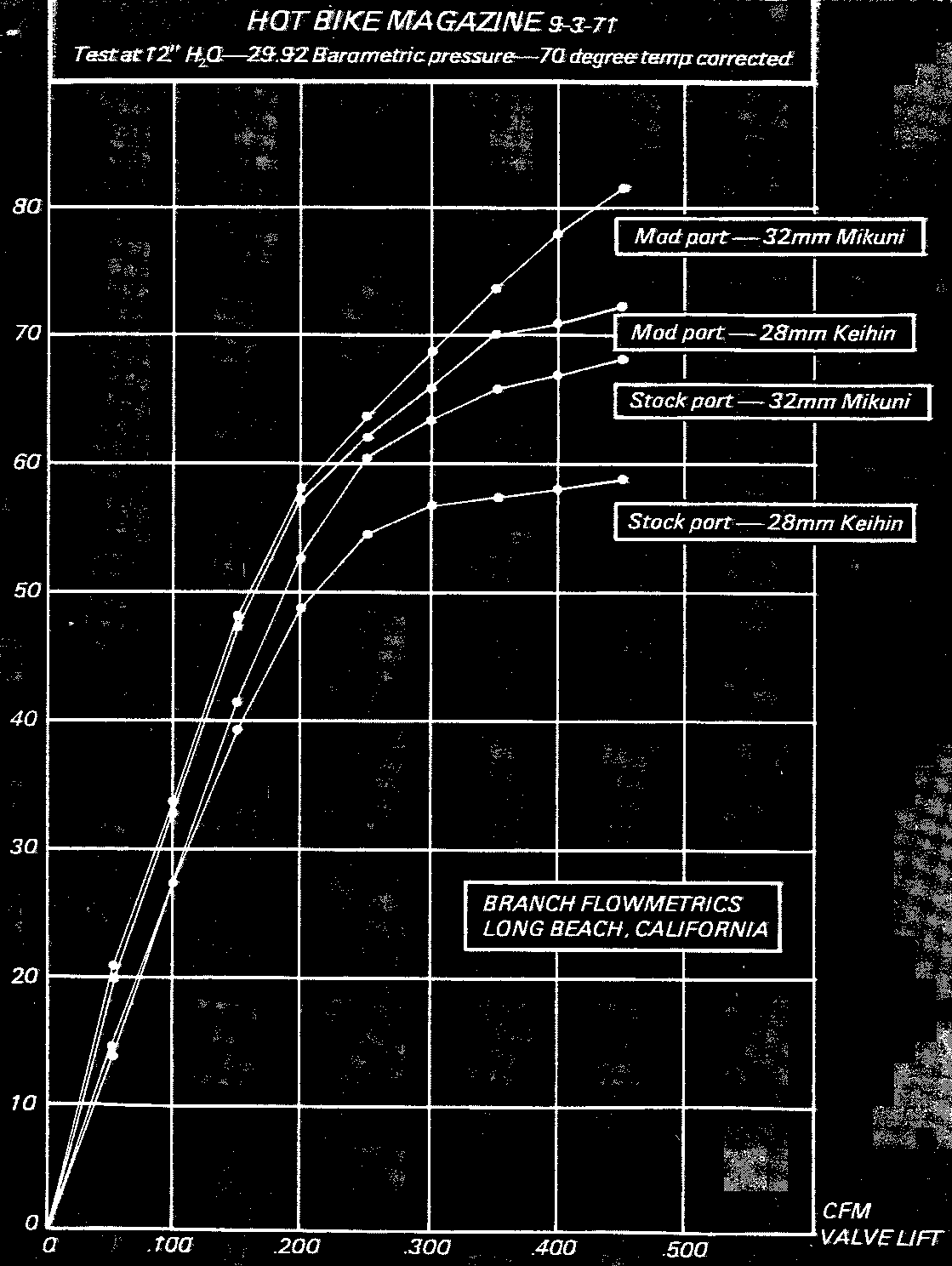Jerry uses a tiny probe which can measure vacuum in different areas
of the port. By inserting the probe into the port, he can find those areas
which have less flow and can draw a graph of the flow deep inside the intake
port. The first thing he found was that the majority of the air movement
was confined to the floor of the intake port. The valve guide area was
severely restricting the flow of air in the upper portion on the port and
would have to be reshaped to allow an increase in CFM. Also the height
of the guide projecting into the port should be cut down about 114-inch.
Reshaping the upper portion of the in- take port caused an increase in
the velocity of the flow which led us to the second discovery about the
port shape. The curve of the port directly behind the guide is too gradual
and forms turbulence, blocking part of the area around the valve head with
a disturbed wall of air. Jerry ground a deeper curve, almost a pocket behind
the guide and flow shot way up. Just the opposite condition exists on the
floor of the port. There the curve is tight and causes the air to try and
go around too much of an angle to reach the valve. The radius of the floor
was reduced slightly and the sides of the port just ahead of the valve
seat were opened up about 1/8-inch to form a mild venturi which would further
accelerate the air/fuel mixture into the chamber. After these modifications
had been made and the port polished smooth, Jerry removed most of the shrouding
in the combustion chamber, making the inside of the head look surprisingly
like a Chysler Hemi. The valve scat width was left stock.
Reinstalling the head on the flow bench, Jerry set up an open port
(entry only) test to sec what improvements had been made. The results were
astonishing! Flow in the open port was now 105.6-CFM, an open port increase
of 37 percent!
With the valve and 32mm Mikuni carburetor in place, flow was up
from 65.7-CFM at .350-inches lift to 73.3- CFM. The best part was that
the flow continued to increase rapidly all the way up to .450 lift, drawing
81.5-CFM. In this configuration, the Honda Four engine can make use of
a cam with really high lift, getting heavy charging of the cylinder, even
at rpm's above 10,000. On the basis of dyno testing on other small displacement,
multicylinder engines, Jerry believes that the required CFM for maximum
use of the air/fuel mixture would be in the area of 75-CFM. This means
that the modified Honda engine can be twisted to over 10,500 rpm without
running out of air! The final figure for the modified port and 32mm Mikuni
carburetor installation showed a 26.6-pereent increase in flow, a tremendous
gain for the small amount of reworking required.
The final test was with the stock Keihin carburetor on the modified
head. Flow was restricted slightly by the 28mm throat on the Keihin, but
at .450 lift the engine was still capable of pulling 72.4-CFM over the
original 58.7- CFM. Asked to estimate a horsepower increase on the ported
engine, Jerry said a 15-pereent increase was in the ball- park!
On the exhaust side of the chamber, very little need be done other
than polishing around the guide. This resulted in about a 10-pereent increase
in the area of the port just behind the guide. In normal practice, the
exhaust should be capable of flowing about 85-90 percent of the intake
rate. Jerry recommends that using straight pipes with megaphones, a flow
rate of 85 percent be maintained. Since the Honda exhaust port comes very
close to this in its stock state, very slight reworking is all that's necessary.
There you have it. If the extra power is wanted, it's available
with porting. Those of you running large displacement Honda Four engines
at the races would stand to gain the most from porting and polishing the
head The results speak for themselves! |





